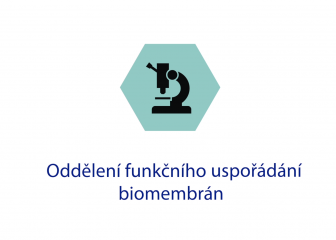|
|
|
Close Help | ||||||||||||||

|
Dovolujeme si Vás pozvat na interní obhajobu s názvem Changes in domain organization of the plasma membrane in the stress responsekterou přednese Mgr. Katarína VaškovičováOddělení funkčního uspořádání biomembrán, Ústav experimentální medicíny AV ČR, v. v. i.
Interní obhajoba se koná ve čtvrtek 5. prosince 2019 od 14 hod.
Abstract MCC/eisosomes are yeast plasma membrane microdomains that respond to changes in both extracellular and intracellular conditions and activate important stress-related signaling pathways. In this study, we investigated the function of MCC/eisosomes under the conditions of chronic glucose depletion. We found that MCC/eisosomes regulate mRNA decay under these conditions. Specifically, we demonstrated that the sequestration of the evolutionarily conserved Xrn1 exoribonuclease at MCC/eisosomes leads to the attenuation of its enzymatic activity. Modulation of activity by the enzyme localization may represent a novel and effective mechanism in regulation of biochemical pathways. Moreover, our results suggested that an MCC protein Nce102 might play a role in vacuolar fusion and lipid droplets degradation. We demonstrated that prolonged chronic glucose depletion induces the translocation of Nce102 from MCC to sterol-enriched microdomains in the vacuolar membrane. Deletion mutants lacking Nce102 and its functional homologue Fhn1 exhibited significant delay in vacuole maturation and in turnover of a lipid droplet marker Erg6. The function of MCC/eisosomes in the stress response have been demonstrated in many fungal species. Similar to the microdomain function, also individual protein components of MCC/eisosomes are widely evolutionarily conserved. To further characterize this phenomenon, we tested the compatibility of Saccharomyces cerevisiae (S. cerevisiae) MCC/eisosome with MCC/eisosomal proteins from phylogenetically distant species Schizosaccharomyces pombe (S. pombe; Sp). We found that S. cerevisiae Pil1 and its homologue SpPil1 compete with each other and SpPil1 is able to substitute for Pil1 function in organizing S. cerevisiae MCC/eisosomes in cells lacking endogenous Pil1 protein. Similarly, Nce102 and its homologue SpFhn1 are competitors, albeit Nce102 is more effective than SpFhn1 in binding both Pil1- and SpPil1-organized eisosomes. In contrast, S. pombe homologue of the eisosome stabilizer Seg1, SpSle1, did not recognize Pil1 at the plasma membrane of S. cerevisiae, while it strongly interacted with its natural interaction partner SpPil1 under the same conditions. These observations shed not only the new light on principles of the MCC/eisosome organization, but also allowed us to reconstitute S. pombe MCC/eisosome in the plasma membrane of S. cerevisiae, which was capable to attract endogenous MCC proteins. Further tests would be necessary to prove whether the imported S. pombe microdomain preserves also its function in the stress response. |
© Copyright 2018. All Rights Reserved. Stránky vytvořila agentura WebMotion.